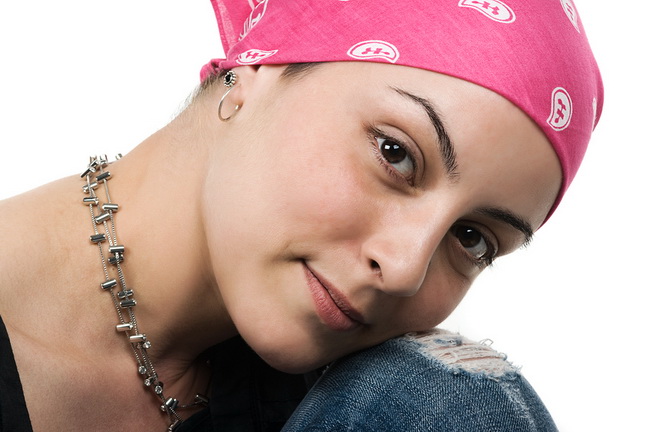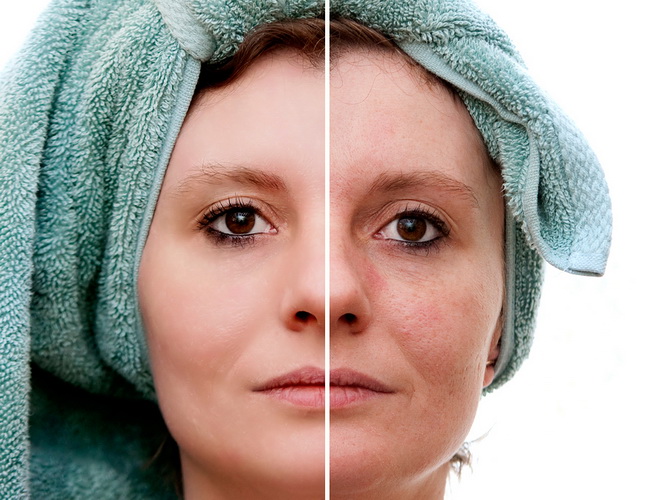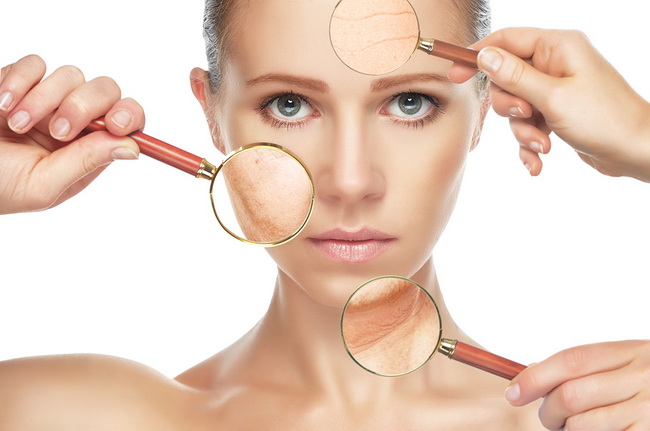- Make It Yourself Lavender Heart-Shaped Bath Bombs!
- 20 Things You Never Knew About “Down There”
- 12 Best Foods For Those Suffering From Arthritis Pain
- 12 Personal Hygiene Mistakes Almost Everyone Makes (Mom Never Told You About #4!)
- 15 Medicinal Plants And Herbs From The Cherokee People
- 12 Mind-Blowing Benefits Of Drinking Coconut Water During Pregnancy
- 12 Outstanding Winter Foods That Won’t Fatten You Up Like A Christmas Turkey
7 Signs Of Skin Cancer That You Should Never Ignore (#4 Is Weird But True!)

Photo credit: bigstock.com
It’s the good ol’ summertime, and with that summer sun comes more time outside. This is the perfect time to go to the beach, go camping in the woods, take long bike rides with your kids, and get skin cancer.
Well, okay, so you don’t want the last one, but this can happen when you get excessive sun exposure. Almost all living things need the sunlight to survive. Getting sufficient amounts of vitamin D directly from Mr. Sun is one of the best ways to actually deter certain types of cancer. We need sunlight to grow our food, improve our moods, and live a healthy life.
What most people do, however, is the make the sun an all–or-nothing deal. You see people slathered in cocoa butter on the beach, literally frying their skin to make it brown; while on the same beach, you will see people with hats and sunglasses, sitting under umbrellas, slathered in sunscreen. What is really needed here is a happy medium. Like everything in nature, there are good and bad elements to everything. Too much water will drown you; not enough will dehydrate you to death. Too much food will make you obese; not enough will starve your vital organs. The sun is no different. Not enough sun can cause serious health problems; too much sun can damage your skin and eyes, and give you skin cancer.
Be certain that you get plenty of natural vitamin D from the sun (especially in the early morning hours). Start with 10 minutes each day and gradually work yourself up to 30 to 45 minutes of sun exposure. This will give most people enough vitamin D to fight off disease and keep the body working smoothly.
After this, however, you should take reasonable precautions to avoid the sunlight. Excessive sunlight can lead to skin cancer. There are numerous types of skin cancer, some of which are not deadly, but can lead to ugly scars when removed. These include basal cell and squamous cell carcinoma. The worst offender by far, however, is melanoma. When it comes to skin cancer, melanoma causes the majority of deaths. Melanoma develops in cells called melanocytes. These are the cells that produce melanin, the pigment that gives your skin its color. For reasons not yet understood, most women develop this deadly type of skin cancer in their legs, and men develop it most often on their backs.
Although the exact cause of melanoma is not clear, it is generally believed to stem from damage to the DNA caused by overexposure to UV light from the sun.
Your risk of developing skin cancer, and the deadly type melanoma, is increased if you fall into any of the following categories:
- You have a weakened immune system.
- You have a light skin tone.
- You live in areas closer to the equator.
- You have a family history of skin cancer or melanoma.
- You have multiple moles.
- You live at a higher elevation.
- You use sun lights or tanning beds.
- You had one or more serious sunburns (severe enough to cause blisters) as a child.
Continue to Page 2

Photo credit: bigstock.com
Even if you have none of the above risk factors, or if you have darker-colored skin, you can still develop skin cancer or melanoma. In fact, those with dark skin are at a disadvantage as most skin cancers, including the development of melanoma, are difficult to see until they have reached more advanced stages.
Finding this type of cancer early is the best way to avoid scarring and to stop melanoma before it reaches the bones or other organs.
Keep reading and find the top signs of skin cancer that you should never ignore.
1. A New Mole
Everyone has moles and most of them are harmless; however, after the age of 21, most people grow few, if any, new moles. If you suddenly begin to grow a new mole, especially if it is black in color, has an irregular outline (not circular in shape) or if it grows larger than six mm (about a quarter inch) in diameter, see your dermatologist.
2. Changes In A Mole’s Appearance
Any mole, birthmark, or other pigmented area that changes color, shape, size, or diameter can be a sign of skin cancer. You should be especially aware of moles that change color from their normal color to another color, such as clear to brown or brown to black, or if it suddenly becomes multicolored. Also, moles that change to a scaly appearance or begin to bleed or ooze any type of liquid should be looked at by a doctor right away.
3. Unusual Spot on the Skin
Sometimes called the ugly duckling sign, any spot on your skin that appears to be different from all other spots might be cancerous. These spots can look harmless, but any spot that grows and does not look like any other spot on your body can be the early signs of skin cancer.
Continue to Page 3

Photo credit: bigstock.com
4. Change in Sensation
Any spot, sore, or mole on the skin that suddenly begins to hurt, itch, scab, crust, erode, or bleed should be checked immediately by your doctor or a dermatologist. This change can be a feeling of tenderness, sharp, stabbing pains, or even just a sense of awareness of a mole or spot on the skin. These are often the earliest signs of skin cancer.
5. Sores That Don’t Heal
Any open sore that does not heal within three weeks, or any sore that scabs over and remains even after the scab has fallen off, is generally a sign of the earliest stages of skin cancer. Any sore that scabs over repeatedly but never heals should be looked at by your dermatologist.
6. New Pigment
Any newly pigmented area that suddenly develops on your skin that is darker than the rest of your skin, but is not a mole, should be looked at by a dermatologist right away. These spots are often small at first, but can be important as they are often the first signs of melanoma.
Continue to Page 4

Photo credit: bigstock.com
7. Swelling
Any mole that develops redness or a swelling beyond the border should be checked out by a dermatologist. There might be swelling without the redness, or the skin surrounding the mole might turn red but not swell. Any changes like this should be investigated — even if the mole itself has not changed.
SEE ALSO: Get Rid of Moles and Skin Tags with Apple Cider Vinegar
Additional Tips:
- Avoid the strongest sunlight during the hours of 10 a.m. and 3 p.m.
- Avoid UV tanning beds.
- If you fall into the high risk categories, have your doctor or dermatologist check your entire body for signs of skin cancer.
- Get your safe sunlight exposure for vitamin D, but avoid getting sunburned.
- Wear sunscreen and long-sleeved clothing with hats and sunglasses if you will be out in the sun during its peak hours.
- Enjoy time in the shade.
- Examine your skin head to toe at least three times a year. A partner is helpful in this endeavor to check your back, the back of your neck, the head, buttocks, and back of the legs.
Be sure to show your doctor any spots or changes in your skin as soon as possible. Your best defense is early detection.
References:

































Jurgita
Feb 24, 2016 at 9:24 am
This article is very comprehensive and useful! Now I’m reading a lot of articles about cancer, becouse I’m afraid to miss cancer signs. Yesterday I saw the article called First signs of skin cancer. This article also about signs of skin cancer. So thank you for article and good luck!